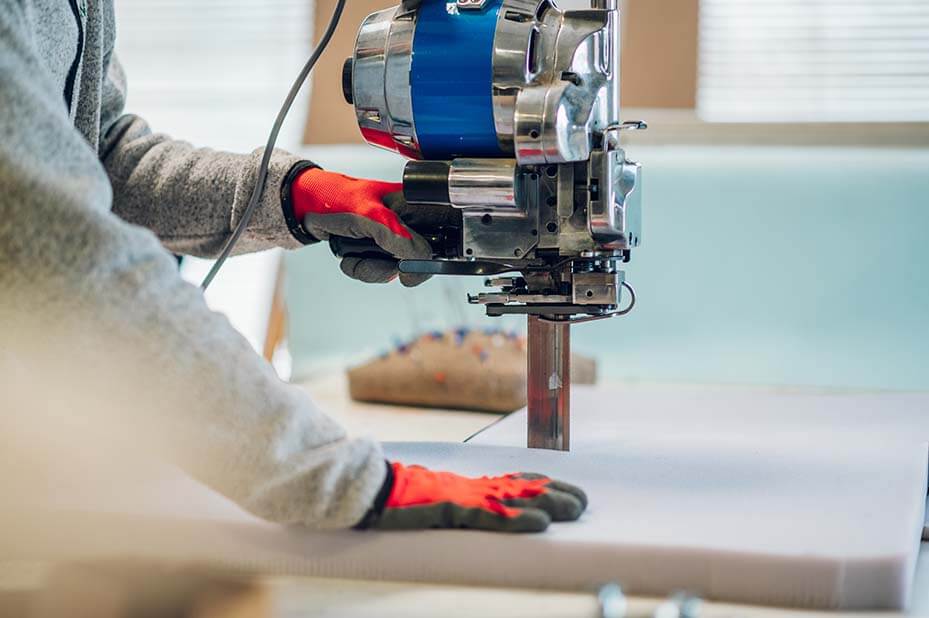Isocyanates Hazards and Safety Measures – Guide for Employers

Isocyanates are highly reactive compounds used in industries like adhesives and coatings. Exposure can lead to health problems such as asthma and skin sensitisation.
To help keep your workers safe and healthy, we have created a comprehensive guide. This guide covers essential information about isocyanates, including what they are, the health hazards associated with their exposure, and the importance of implementing a health monitoring program.
What Are Isocyanates?
Isocyanates are a group of highly reactive organic compounds used in the manufacture of:
- adhesives and glues
- coatings lacquers and varnishes
- spray paints
- elastomers and foams
- floor / roof screeding
- hardwearing plastics
- medical dressings
Isocyanates are toxic until they react with other chemicals to form the hardened or ‘cured ‘polyurethane product. Fully-cured polyurethanes are non-toxic, unless they are heated or abraded, which makes them give off isocyanates and other toxic substances.

Understanding Isocyanate Exposure
Isocyanates can enter the lungs when workers inhale isocyanate vapours, mists or aerosols. They can also be absorbed when a worker’s skin is exposed to liquids, resins, or droplets. Even workers who don’t handle isocyanates directly, but work near others who are using isocyanates, can still be exposed.
Isocyanate exposure can occur throughout the manufacturing process, from initial surface application to cutting or curing.
Exposure is common in many industries including painting, printing, automotive manufacture, construction, furniture production, and mining.
Isocyanates Health Effects
Isocyanate exposure is associated with numerous health problems. Exposure can cause asthma, skin sensitisation, skin or mucous membrane irritation, and, rarely, a lung reaction called hypersensitivity pneumonitis.
Occupational Asthma
They are one of the leading causes of occupational asthma in Australia. The condition commonly presents as:
- wheezing
- chest tightness and shortness of breath
- cough
The symptoms can occur at work, or much later after work, and the asthma can be made much worse by repeated exposure.
Once a worker has been sensitised, even very low-level exposures might produce a potentially life-threatening asthma attack, which may end their career. Exposure to isocyanate aerosols can lead to hypersensitisation which can give rise to ‘bagpipe lung’ (also known as extrinsic allergic alveolitis or hypersensitivity pneumonitis).
Skin Sensitisation
Sensitisation by skin contact can cause allergies that can affect both the skin and/or the lungs. Acute exposure to these chemicals can cause irritation to the eyes, skin, and mucous membranes of the nose and the throat, occasionally accompanied by headaches and itching. Sensitisation can occur at isocyanate concentrations lower than those that may give rise to irritation.
Potentially Cancer-Causing
Most isocyanates are not carcinogens – the exception is TDI (toluene diisocyanate) which has been found to cause cancer in some laboratory animals (although it has never actually been demonstrated in humans). Isocyanates are not associated with human fertility or pregnancy problems nor with abnormalities of foetal development.
Exposure Testing and Control Measures
To safeguard workers’ health and minimise the risks associated with exposure, control measures and biological monitoring programs are essential.
Control Measures
Since isocyanates can act as skin and respiratory sensitisers, and to control the risk of future health issues in the workplace, exposure to isocyanates should be kept as low as reasonably practicable.
If adequate control measures are in place – such as closed ventilation systems (spray booths, enclosed moulding machines), air-fed respiratory protection and personal protective clothing/gloves – these conditions, and episodes of isocyanate exposure, are easily preventable.
Biological Monitoring Program
Isocyanate Biological Monitoring (BM) is especially necessary for workers involved with:
- motor vehicle repair paint use
- foam blowing
- hard polyurethane manufacture
- glues and adhesives
- floor screeding
- underground mining.
BM is a simple and cost-effective way to check that workplace control measures are sufficient, being effectively applied and exposure is being adequately controlled.
BM assesses worker exposure to isocyanates, confirms control measures, and prevents health risks. While not a diagnostic tool for isocyanate-related conditions, it helps identify occupational exposure when symptoms arise. BM also gauges skin absorption, especially with glove use. It’s user-friendly, providing personalised results to promote better work habits.
BM aggregates all routes of exposure, inhalation, skin absorption and ingestion, so a result cannot identify the actual source/route of exposure. It will, however, show the need for corrective action to be taken.
Safe Work Australia’s Guidelines for Isocyanate Exposure Monitoring
Safe Work Australia recommends that Biological Monitoring programs for workers using or exposed to isocyanates should include:
- Initial baseline BM upon the commencing employment
- Periodic BM review, generally performed after 6 weeks of commencement (of isocyanate exposure)
- Regular 6-monthly BM every six months. If after 12 months, no adverse health issues are reported this should then switch to annual testing
- Terminal BM performed at the end/termination of the period of isocyanate exposure.
How Is Isocyanate Exposure Testing Performed?
A post-exposure urine sample should be taken, ideally within an hour of the end of exposure, especially for those tasks involving:
i) heating of polyurethane
ii) use of:
- HDI (hexamethylene diisocyanate, used in two-pack spray paints)
- TDI (toluene diisocyanate, used in adhesives and foam blowing)
This is recommended as the above-mentioned isocyanates are all rapidly excreted.
End-of-shift testing should be performed with:
i) Encountering abrasion of polyurethane
ii) Exposure to MDI (methyl phenylene diisocyanate)
If significant skin exposure is a possibility, pre-shift next-day samples should also be considered (due to the delayed absorption through the skin).
BM samples mostly reflect that day’s exposure (reflecting the short half-life of excretion), and generally do not illuminate long-term exposure. For this reason, it is recommended that several samples are taken initially to ensure that ‘normal practice’ is captured.
The urine samples should be sent ideally the same day or the next day to Safework Health for analysis. If shipping is delayed, samples should be stored frozen, if possible, prior to despatch.
How do you interpret results?
Interpretation of results requires an appreciation of the work practices, tasks and controls used by an individual worker on the day of sampling.
Results will fit one of three broad categories:
- No detection — with no evidence of exposure to the requested isocyanates (no further action required and repeat testing in 1 year)
- Low-level exposure — meaning that exposure was detected but the levels were within the BMGV (control measures and their use should be checked but repeat testing is not required immediately; the result may be due to intermittent behaviours, such a visor-flipping, if the investigation shows no systematic concerns); and
- Exposure exceeds the BMGV — this requires action be taken to check the control measures and their use and to resample workers once any issues have been resolved (if results remain elevated, further investigation is required but workers do not need to be removed from tasks). Where work practices or exposure controls are significantly altered then retesting should be considered to ensure that exposure levels have not increased as a result.
Safework Health’s Biological Monitoring Service
Safework Health’s NATA accredited isocyanate urine testing service can detect your workers’ exposure to this harmful chemical. We offer a rapid 5-day turnaround for results, an accurate and cost-effective testing method, and national coverage.
Contact our friendly team today to find out how we can keep your workers safe and healthy.

One thought on “Isocyanates Hazards and Safety Measures – Guide for Employers”